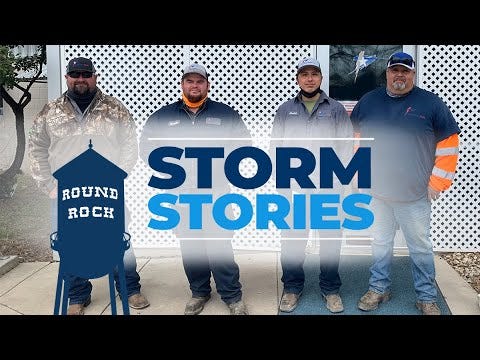From Lifeless to Liked: How High Performing Governments Tell Better Stories
Trust isn’t built with more content. It’s built with the right content.
Welcome to the final installment in the 5 Elements of High Performance Communications series.
This is where it all comes together.
You’ve seen it in every element we’ve covered so far: Exceptional content doesn’t happen in a vacuum. It emerges when your strategic priorities are clear, your leadership is aligned, your listening is intentional, and your brand is consistent.
Content creation is the bottom of the funnel for strategic and organizational excellence. It’s how the public experiences the work you’ve delivered and begins to understand what’s coming next. It’s how trust is built, post by post, story by story.
Communicators can work some magic when they’re telling the story of a government that’s running well. When services are being delivered with excellence and leadership is aligned, storytelling becomes a tool for connection, not cope.
Create content that connects
Once alignment is in place, the job shifts to execution: creating content that resonates.
That means thinking like your audience, seeing projects and programs through their eyes. It means meeting people where they are, in a fractured media landscape where attention is short and trust is hard to earn.
To break through, your content must work harder. It must be clear. It must be creative. And it must be built with your community in mind. If the content doesn’t feel relevant, it won’t be seen, much less remembered.
Michael Bridges, Citrus County, Florida, communications chief, put it like this:
“Too often, governments fall into the trap of talking to themselves.”
If you want to connect with the public, start by understanding what they care about, then build content that speaks to it, clearly and creatively.
Tell your story through your people
People care more about people than they do about data or statistics.
That’s why employee-focused storytelling is so powerful. It humanizes the work. It builds trust not by explaining systems, but by spotlighting the folks who keep those systems running.
Brownwood’s ISERVE campaign nails this by profiling frontline employees who quietly make the government work, from parks maintenance workers to GIS specialists. The public responded in ways you don’t see on many government social media posts. To wit:
Round Rock’s Storm Stories followed the same logic, spotlighting city employees who went above and beyond during the 2021 winter freeze. The video below tells how a group of public works employees helped save a family after a generator in their garage sparked a fire. In the video, you’ll hear a resident express deep gratitude for their efforts.
These aren’t anonymous “staff members.” It’s Matt, Jonathon, Ronnie and Greg, good dudes who jumped into action after a 12-hour overnight shift working in single-digit temperatures sanding city streets.
Tell the story of your people, and you reveal the passion, professionalism, and pride behind public service.
Tell the story of your place
The best content doesn’t just show what you do or who’s doing it, it shows where you are. It taps into local identity, hometown pride, and a sense of belonging.
A Hippo Loose in Hutto told the story behind the town’s beloved (and slightly bizarre) mascot with heart, humor, and cinematic flair. It wasn’t about branding. It was about belonging.
Same with Citrus County’s In Focus series, a high-quality, government-owned storytelling platform that helps residents understand big decisions in context.
People want to feel good about where they live. Help them do that by telling stories that ground your agency in its place.
Make room for creative risk
A good story doesn’t have to be serious to be effective. Sometimes, the best way to earn attention is to surprise people—with humor, creativity, or a little weirdness.
Fuquay-Varina’s A Dashmor State of the Town video is a perfect example. In so many words and images—hilarious, tongue-in-cheek words and images—it told complainers exactly where they could stick their whiny gripes.
Was it over the top? Absolutely. But it was also on-brand, well-produced, and wildly successful. It connected.
Round Rock’s Lost Teddy Alert took a different route—and went viral. What could have been a basic “item found” post turned into a citywide feel-good story with national reach. A stuffed bear left behind in a City Hall plaza became the star of a photo adventure at downtown hot spots, capturing hearts and blowing up engagement metrics.
These kinds of projects result from having the capacity to create them. Fuquay-Varina spent $50,000 on its A Dashmor production, an investment fully supported by the town council because the state of the town event has become a highlight of the year, generating pride, attention, and laughter across the community.
Round Rock’s communications team includes videographers, a graphic designer, and experienced storytellers who work together to build thoughtful, high-quality content every week. It’s also done the branding research on its downtown district.
The leader of Round Rock’s comms team says city leaders who yearn for this kind of killer content need to recognize that next-level creativity takes support.
“Don’t throw more on your communicator,” Sara Bustilloz said. “Give more resources, not more work. We need the space to breathe and be flexible. This is a high-burnout job.”
Content on social media: Strategy, not scramble
High performing governments don’t treat social media like a to-do list. They treat it like a craft.
“We’re not here to post for the sake of posting,” Sara said. “Content should align with the city council’s broader goals and be timed for maximum impact.”
That kind of discipline leads to quality: smart visuals, purposeful messaging, and posts people actually want to read. Round Rock’s Austin Ellington—the local gov social media legend who created the Lost Teddy Alert—put it this way:
“We owe it to our audience to put creativity into everything we post. If we don’t, why should residents care?”
Transparency matters too. Especially when the message is unpopular.
“If we’re proposing to raise your taxes, we’re going to tell you exactly why,” Austin said. “The more people see that type of straight talk from an organization, the more they’re like, ‘OK, these guys are legit.’”
Criticism is inevitable. But how you respond builds—or breaks—trust.
“We don’t just have the ability to set the record straight,” Austin added. “It’s our responsibility.”
You don’t need more content. You need better content.
Here’s what a lot of agencies miss: Less content, done better, is often the smartest move.
Less is indeed more. It’s a strategy worth exploring. It’s also how you protect your team’s time and your community’s attention.
Start with purpose. Keep it real. Finish with heart.
That’s the content strategy high performers are using. And it’s why their messages don’t just inform. They connect.
Practical takeaways
Ask yourself and your team:
Are we creating content that aligns with our strategic priorities?
Do we showcase our people and tell human-centered stories?
Are we reflecting the identity and tone of our community?
Are we investing in quality content—or just adding to the pile?
Do our social media habits reflect a thoughtful strategy—or just a need to “get something out”?
Looking ahead
This wraps up the 5 Elements of High Performance Communications series. If you’ve followed along from the start, thank you. If you’ve missed a few along the way, now’s a great time to revisit the earlier elements:
And now—Content Creation
The best governments don’t just publish more. They listen more. Lead more. Align better. And create with purpose.
Let’s keep doing the work that earns trust.
Let’s play the long game.
Onward and Upward.
📚 Related Reads on the road to High Performance
If you want to create content that connects, start by studying what already works. These cities didn’t just crank out posts; they told real stories, took creative risks, and built trust along the way.











